How does the world hear contemporary Los Angeles? Through rhymes about burger joints and Bel-Air mansions, verses about Mulholland curves and a wallet lost in El Segundo. Choruses that recalibrate neighborhoods.
Roll down Ventura near Reseda and the strummed chords to Tom Petty’s classic “Free Fallin’” arrive as if with the breeze, swooping into our psyche as we sing along about a freeway “runnin’ through the yard.” Cross the Sixth Street Bridge and Thee Midniters bellow at full volume: “Let’s take a trip down Whittier Boulevard!”
“All I wanna do is have some fun,” Sheryl Crow declares as we follow her her cruise down Santa Monica Boulevard. And who hits the Compton city limits without reciting N.W.A, Kendrick Lamar or YG lyrics about Rosecrans Avenue, Tam’s Burgers, Church’s Chicken or Lueders Park?
Asked what defines a “Los Angeles song,” Best Coast singer and lyricist Bethany Cosentino said, “It’s anything that I can put on in my car on a sunny day.”
But some of Los Angeles’ selling points need to be reset. The idea of endless summers has shifted in the age of climate change. “It Never Rains in Southern California” has morphed into Bad Religion’s “Los Angeles Is Burning.” The carefree allure of rolling down the Ventura Highway used to be a cool thing to sing about. Now the drive is mostly a bumper-to-bumper slog.
“The map grows bigger and bigger,” singer-songwriter Devendra Banhart said while sitting on the front porch of his house, perched halfway up a hill overlooking Echo Park.
For a city constantly in flux, song lyrics tether an address to the past in the same way that scenes from locally shot old movies reveal the disappeared traits of intersections and streetscapes. Call it a Map of the Couplets.
The 50 songs that follow, from Ice Cube’s post-riot “It Was a Good Day” through Lana Del Rey “Venice Bitch,” are one version of that narrative, a mixtape that has attempted to locate musical intersections both physical and thematic.
Keep reading:
Behind the Story: 50 songs for a New Los Angeles
Thousands of songs have been written about L.A. Here are 25 sure-fire classics
Lana Del Rey
Venice Bitch’
An East Coast ex-pat conquers California

“Oh God, I love him on my lips / It’s me, your little Venice bitch / On the stoop with the neighborhood kids / Callin' out, bang bang, kiss kiss”
The first hint that Lana Del Rey would be exploring the myths and mystique of Los Angeles came in the opening seconds of her breakout 2011 song “Video Games.” Its video, which went viral, found the erstwhile Elizabeth Grant among a grainy montage: Kids playing in cloistered middle-class neighborhoods sandwiched between shots of the Chateau Marmont, palm trees and a cruise down Hollywood Boulevard.
In the years since, Del Rey has not just embodied for a new generation the city’s love affair with self-invention. She’s conquered the city. In the B-movie-styled video for her recent cover of Sublime’s “Doin’ Time,” she plays a Godzilla-sized California girl stomping through downtown Los Angeles before heading westward to — where else? — Venice Beach. She seems to conquer not just Venice but the entirety of the California dream. “We’re well-qualified to represent the L.B.C.,” she sings as she strolls, carelessly aware that, coming from of her, the claim’s bunk.
When Del Rey decided to move west, she said during a recent Q&A at the Grammy Museum, she and her sister already knew they wanted to try the canyon life. “We liked the idea of Crosby, Stills & Nash and that communal, getting-togetherness,” she said. The artist added that she’d already caught the bug: Her friend, the singer and songwriter Jonathan Wilson, has long held a regular Laurel Canyon song circle, and she’d witnessed the vibe firsthand.
Echoing thousands of artistic East Coast ex-pats, she explained: “I was trying to get the stuff I couldn’t get from New York. And also, I just love that ‘60s sound — the Mamas and the Papas’ “California Dreamin’.”
Unlike that L.A. classic, Del Rey’s “Venice Bitch” isn’t written from the perspective of someone longing to return to California, but from a resident at home and in her element. When she sings of hanging “on the stoop with the neighborhood kids,” of that seasonal juncture when “summer fades away — nothing gold can stay,” it’s easy to imagine palm trees silhouetting the Pacific sunset.
That the song extends for 10 time-bending minutes is notable not just for its occasional lost-in-weed aimlessness (“Back in the garden, we’re getting high now,” she sings at one point), but the timing of its release. Del Rey told Beats One host Zane Lowe that her desire to release a long song was dictated by it being the end of summer.
“Some people just wanna drive around for 10 minutes and get lost in electric guitar,” she said.
Tyler, the Creator
‘Okra’

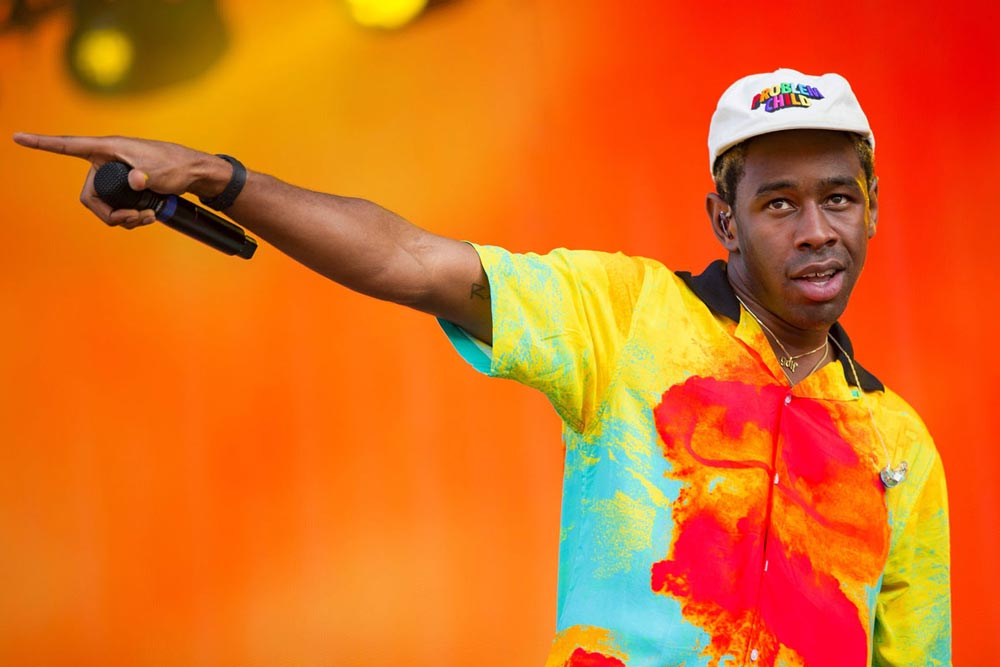

"Bitch you’re a bum, see you don't understand / Yeah, I cut off some friends, 'T where you been?' / Bitch I'm in Bel-Air, been lookin' for land"
The artist born Tyler Okonma came up in Los Angeles, but rose to fame after he imagineered his own fantastical Southern California musical theme park called Odd Future. The rapper, producer, entrepreneur, designer and TV personality, who first appeared in The Times as a 15-year-old sophomore at the Media Arts Academy in Hawthorne (he was described as operating “at a significantly higher voltage than the average teen”), has angled his way through the decade with a memorable buoyancy. Considering that he’s long frequented the Fairfax district, where he keeps a shop across from Canter’s Deli, it makes sense that he’s vibing with Bel Air in “Okra.”

St. Vincent
Los Ageless’
Annie Clark on fame and a world where everything grows in reverse

“The last days of the Sunset superstars / Girls in cages playing their guitars / But how can I leave? / I just follow the hood of my car / In Los Ageless, the waves they never break / They build and build until you don’t have no escape”
The singer, songwriter, guitarist and producer Annie Clark, who performs as St. Vincent, has traveled an electrifying path on her way to Los Angeles. Born in Oklahoma and raised in Texas, she earned early fame after relocating to New York. A few years ago the artist headed west, where she currently lives, writes and records. Below, Clark recalls the inspiration for “Los Ageless.”
I had just moved out here and built a little studio, in part because I was so inspired by a lot of the scene that was happening here — Kamasi Washington, Kendrick and young kids kicking up the mantle of jazz. I was also kind of a spectator to these quintessentially Hollywood experiences. For the first time ever, I saw under the hood of that machinery and I thought it was interesting. It was a whole culture with a different set of rules.
I saw this idea of the child actor, when the parents are milking the children and not the other way around. The title, “Los Ageless,” is a nod to Steely Dan’s “Showbiz Kids,” where the background singers sing, “Go to Las Wages.” The verses are a very salty, very cynical look at the darker side of that fame, or proximity to fame, or desire for fame. There’s a line, “The Los Ageless hang out by the bar / Burn the pages of unwritten memoirs.” You meet a lot of people who are talking about that thing they’re going to do. Lana Del Rey just had a great line about it: “You talk to the walls when the party gets bored of you.”
I was also thinking about [Steely Dan’s] “Babylon Sisters”: “Drive west on Sunset to the sea.” The idea that the manifest destiny of the American dream is actually to just drive your car into the ocean and kill yourself.
And I was picturing a world where everything grows in reverse and the older people are the younger they look. And trying to hold onto fame, trying to hold onto their money, trying to hold onto youth, trying to hold onto beauty, and just ending up being the destroyer. The kind of thing that brings about your own demise.
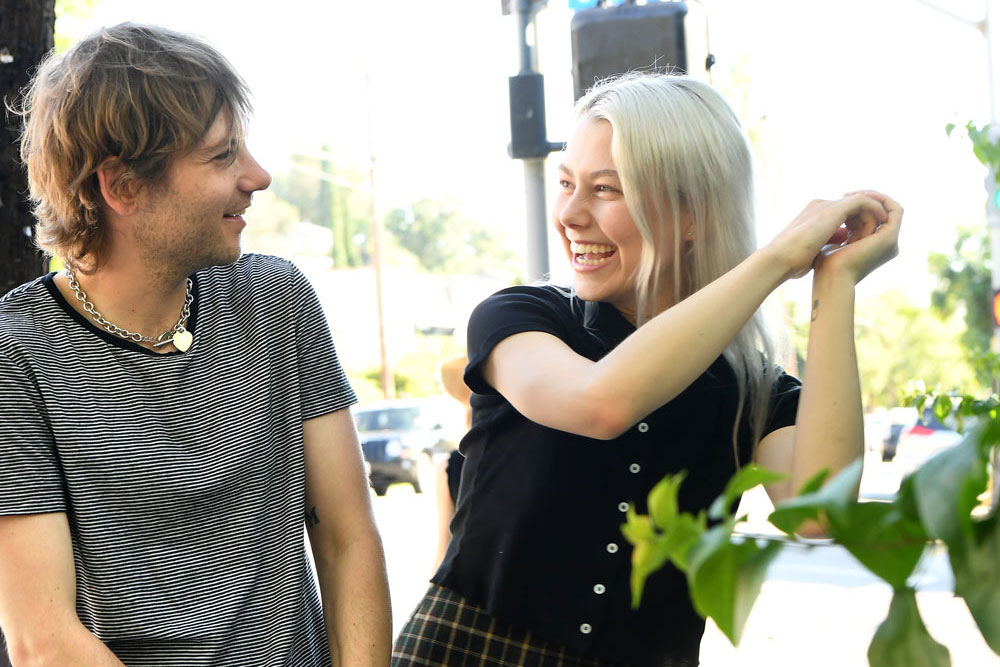
Phoebe Bridgers
Scott St.’
A songwriting duo pays tribute to an Echo Park avenue
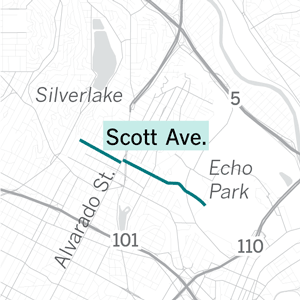
“Walking Scott Street, feeling like a stranger / With an open heart, open container / I've got a stack of mail and a tall can / It's a shower beer, it's a payment plan / There's helicopters over my head / Every night when I go to bed”
Bridgers and her writing partner Marshall Vore share writing credit on "Scott St.," one of the highlights of Bridgers' 2017 folk-rock album, "Stranger in the Alps." Written when Vore was living on Scott Avenue. in Echo Park, the team adjusted the location to the more alliterative Scott Street. But anyone who's spent time in the area can identify (and likely be triggered by) the reference to helicopters. Bridgers and Vore recalled co-writing the song during a recent conversation.
Phoebe Bridgers: Marshall and I met and started playing music together immediately, in 2014, and he's still my drummer. We would end up writing a bunch of songs together, but this was kind of the first one. Marshall had this little idea, and I was like, "That’s awesome."
Marshall Vore: I was in a relationship for a long time that took place primarily in Silver Lake. When it was over, it was the first time in a really long time that I not had been in a relationship. All of a sudden I was out of it, isolated, and living near Glendale and Alvarado.
I was having one of these moments where I was like, "I need to go to talk to somebody who I’ve known for a long time." I thought it would be cool to just walk over [to an old friend's] and knock on the door. It was night time, and I was walking the two blocks in Echo Park, carrying my mail. I stopped and got a tall can of Coors along the way. I cracked it, and I started singing to myself the very first opening lines.
I had that in my head for literally two years. Then I was sitting around Phoebe’s apartment and found some chords after listening to an Evan Dando song, and I tried to plug those first lyrics into it. And then Phoebe grabbed the guitar from me, as she always does.
Bridgers: Then we got into some deep conversations about how easy it is to be estranged from someone that you were super close to, which is basically what the song is about. What I love about this song is that it doesn’t tell you why you have to feel what you’re feeling. It’s really melancholy, but it’s not a smoking-a-clove-cigarette-and-thinking-about-suicide song.
Kenny Chesney
‘Setting the World on Fire’

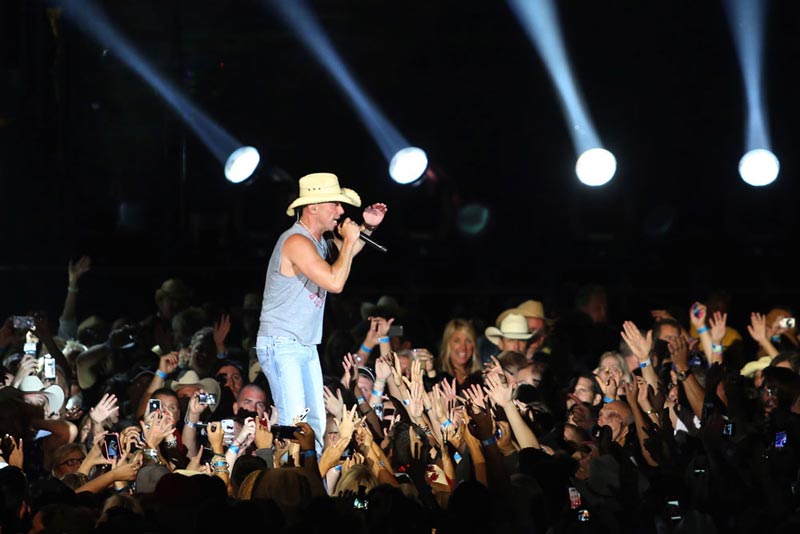

"Yeah we got drunk on La Cienega Boulevard / Takin' pictures of people we thought were stars / It’s easy to give in to your heart / When you’re drunk on La Cienega Boulevard"
Though he didn’t write “Settin’ the World on Fire,” a duet with Pink, Chesney likely knows his way around Hollywood: His brief 2005 marriage to Oscar-winning actress Renee Zellweger was the talk of the gossip pages. In the song, we find our hero, likely in West Hollywood, getting drunk, listening to music and making out beside empty streets. But La Cienega extends south through mid-city, Inglewood and Hawthorne. Was Chesney at Largo? Or maybe living the sweet life in Ladera Heights with Frank Ocean?
Kanye West
‘No More Parties in LA’

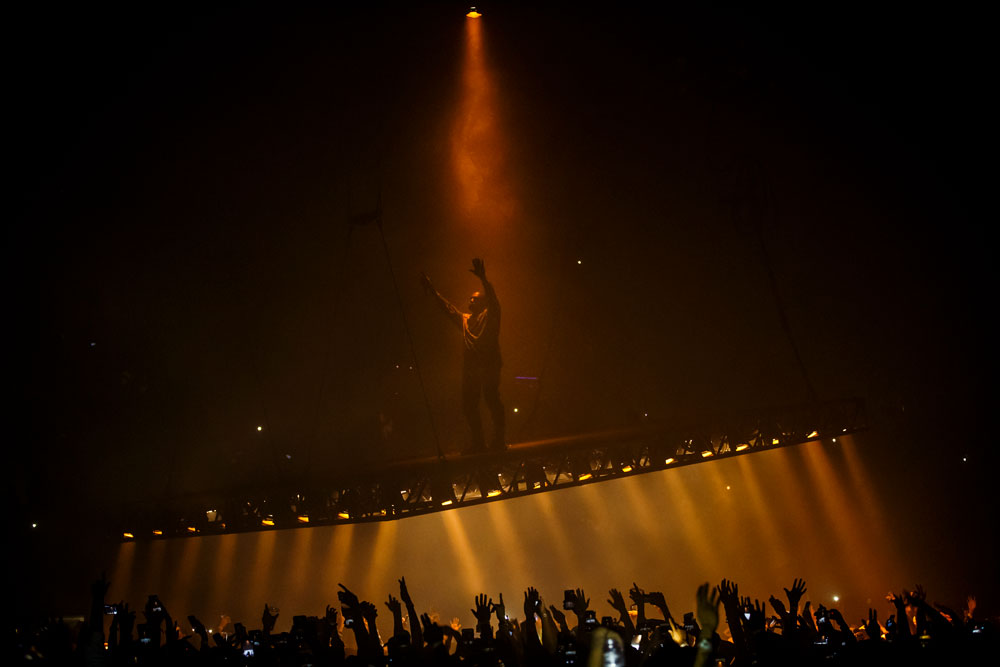

"Textin' and drivin' down Mulholland Drive / That's why I'd rather take the 405 / I be worried 'bout my daughter, I be worried 'bout Kim / But Saint is baby 'Ye, I ain't worried 'bout him"
It does make a certain amount of sense, texting in the heavy traffic of the 405 instead of the winding Mulholland Drive. The rub is that the former runs north-south and the latter runs east-west. Regardless, when West raps that “Mulholland Drive need to put up some goddamn barricades,” he’s spitting truth.
Father John Misty
‘Chateau Lobby #4 (In C for Two Virgins)’

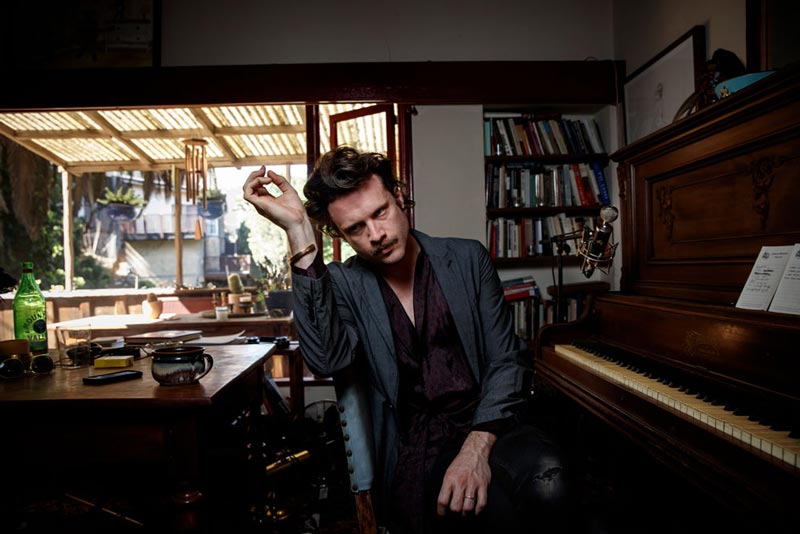

"Emma eats bread and butter / Like a queen would have ostrich and cobra wine / We’ll have Satanic Christmas Eve / And play piano in the Chateau lobby"
In two unrhymed couplets, the artist born Josh Tillman crafts a short story worthy of its setting. Written to his wife, the song is set at the Chateau Marmont. Mr. Misty is at the piano as his love enjoys refreshments worthy of her stature: ostrich and cobra wine. It’s Christmas Eve. Hail Satan. The hotel’s mystique keeps the place booked year-round.
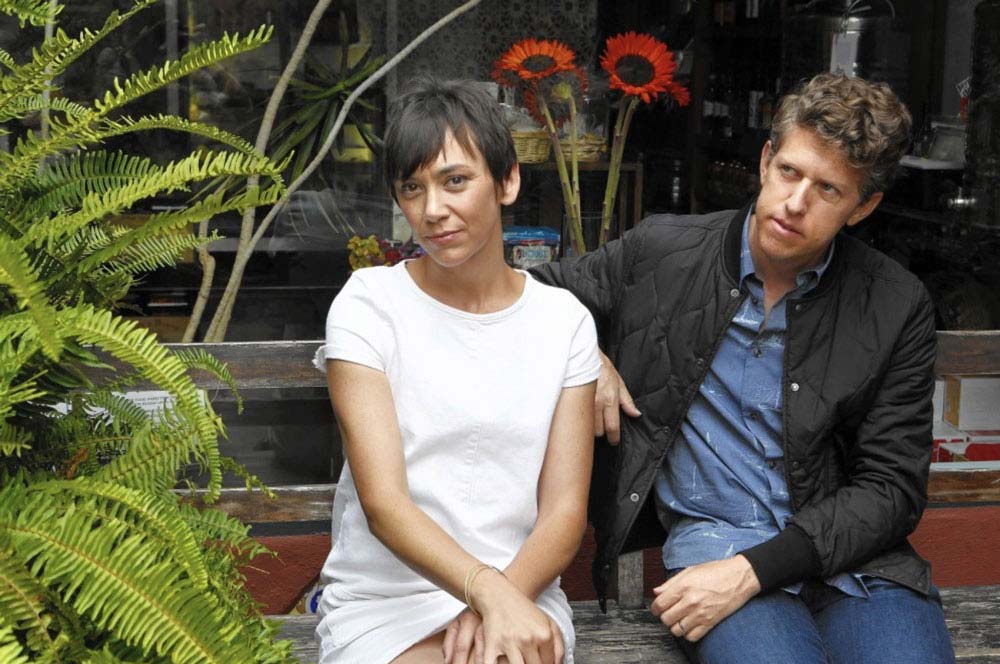
The Bird and the Bee
Los Angeles’
Two native Angelenos defend their hometown
“Los Angeles, Los Angeles / Don't listen to a thing they say / They don't need you in the same way / Los Angeles, Los Angeles / Don't ever let them change you / They don't know you like I do”
The singer and songwriter Inara George and her collaborator Greg Kurstin showed some nerve in naming their 2015 song. Ask a music fan about the song “Los Angeles” and chances are someone will recite John Doe and Exene Cervenka’s protagonist, who “gets confused flying over the date-line” during a retreat from the city. The Bird and the Bee’s song is about returning to a place where coming alive means driving around, where “the water’s warm, our bodies glowing.” Below, they recall composing “Los Angeles.”
What sparked you to write “Los Angeles”?
Inara George: I was out of town for a while. I was dating this guy and when I came back, I was at a party with him and there was this girl there. I found out later that maybe something happened between them while I was out of town, I’m not sure, but he was a little bit edgy with me.
I was having a conversation with her and she said, “Where are you from?” I said, “Los Angeles” and she was like, “No, where are you really from?” And I was like, “Bitch!” [laughs.]
Greg and I are both from Los Angeles, and that question comes up quite a bit. “No, where are you really from?” That was the idea of the song: Loving this place, especially now, when it seems like everyone is coming here. L.A. used to be such a bad word. So it was this love song to our city, and also taking a little bit of ownership over being a local.
It takes some confidence to name a song, simply, "Los Angeles."
George: Well, both Greg and I are from Los Angeles and both of our parents are from Los Angeles. My parents met at Hollywood High, and Greg’s parents met at Hamilton. [George's father is the late Little Feat founder Lowell George.]
Greg Kurstin: When you tell people that you’re from L.A., usually they can’t believe it. "You’re really from L.A.?" Most of my friends — the musicians that we know, like Joey Waronker and Beck — we all talk about growing up in L.A. all of the time. It’s a very unique place to grow up. You have all of the celebrities in one corner, and you have the culture that L.A. brings, and it’s all mixed together.
George: There’s a feel about L.A. that’s different than the rest of the country. The way the light is here, the way that you are in your car a lot, how you’re interacting with people, the wasteland and the culture, the history. That's a way to get at the song, and I feel like when we were writing it we wanted that feeling — that linear feeling you get when you’re going through the city. You have these mountains and stuff, but a lot of times you're on these long highways just getting through. And at night, it’s the lights. There’s something about that feeling.
What are your favorite songs about Los Angeles?
Kurstin: I always go to the band X and "Los Angeles." I’ve really gotten deep into the lyrics and the meaning of the lyrics, because I remember just being a little punk rock kid and loving X and hearing those songs and the energy of that song. That opening line always stuck out with me. ["She had to leave ... Los Angeles."]
George: I love [Missing Persons'] “Walking in L.A.“ and X's “Los Angeles“ but then, there's also this rich history of very old songs, almost propaganda songs, that were telling people, "L.A. is the place to be, come here!“ And now I feel like we're all, "Stay where you are! There’s too many people here already. Don’t come to L.A."
Vince Staples
‘Norf Norf’



"Nate Dogg still here 'cause of n— like me / Police still scared 'cause of n— like me / In the hood, like a dollar sweet tea or a Louis Burger / You ain't with the business, n— / Who you murdered?"
Slang for north, the title of Staples’ early hit stems from his life in North Long Beach. Lyrically, Staples name-checks Louis Burger III, the Poppy Street of his youth and nearby Ramona Park. The chorus is one big boast to his Zip Code — and to his lanky frame: “From the city where the skinny carry strong heat / Norfside Long Beach / Norfside Long Beach.”
Jhene Aiko
Eternal Sunshine’
A tribute to a 'special block with its own vibe'

“Living on Sycamore Street and spending weekends on the beach / We were free to be everything we dreamed / Flying kites and water fights / Summer nights, we'd ride our bikes / On Overhill, Ladera Heights / Man, I swear”
On “Eternal Sunshine”, R&B singer Aiko, a native of Los Angeles, recounted the bliss of a youth spent running the hills of southwest L.A... The melancholy song drew its name from director Michel Gondry’s surrealist love story and was issued on Aiko’s breakout album “Souled Out.” Here, she recalls the inspiration for “Eternal Sunshine.”
I did a visual for “Eternal Sunshine” that was a reenactment of this car accident that I got into with my daughter, her dad and my sister. We were all in the car and another car hit us. I remember when it happened, literally my life flashed before my eyes and I saw a bunch of childhood memories with my siblings, of summertime memories of L.A.
For me, that song is like a mantra. It’s me thinking about my favorite memories growing up in that area adjacent to Ladera Heights. We call it Slauson Hills because it’s on Overhill [Drive] and Slauson [Avenue], but the places that we would ride our bikes to were in Ladera, like Ladera Park and the Ladera Shopping Center.
I always say it’s always sunny in Slauson Hills, because it is. People who are really from L.A. know that Slauson and Overhill is this special block with its own vibe.

ScHoolboy Q
Hoover Street’
An autobiographical look at life before fame
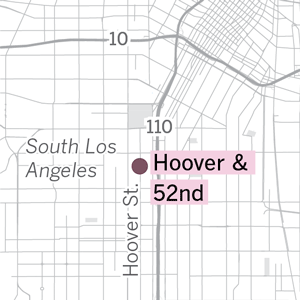
“We wasn’t thinking of getting money then / Nor did I wonder why my uncle done sold his Benz / Cause he been tripping now, he sweats a lot and slimming down / I also notice moms be locking doors, when he around / But anyways, his wife done left him and now he living with us / My bike is missing, Grandma like to hide her check every month”
Schoolboy Q grew up on Hoover St. near 52nd, and this epic narrative details the challenges, betrayals and bonds of his neighborhood and home.
What does the track “Hoover St.” mean to you?
Growing up around Hoover Street, I was inspired by the things I saw. All of the things you witness, all the thoughts that are going through your head while you’re brushing your teeth and putting your drawers on — before you go out and risk it all. The day starts and, boom, you're in the story.
As “Songs for a New L.A.” bears witness, hip-hop dramatically shifted the center of L.A.'s musical map from the canyons to South L.A.
Some of the most talented people ever came out of South L.A. We’re the reason there’s a genre called gangsta rap. We changed the whole game. People used to rap like [starts rapping], “Hippity hip hop and you don’t stop,” until L.A. showed up. We came in a little more aggressive, a little more violent, telling you about the real problems that were going on in our communities, from murder to prostitution to selling dope to your crackhead uncle to black-on-black crime. We’ve been hurting ourselves longer than the police have. Every day, it’s another black person murdered by a black person. There’s a black dude that’s going to die within the next two hours from another black dude, guaranteed. I may not hear about it. But it’s a fact. And it’s sad.
Does your family still have that house on Hoover?
Nah. When my grandma died my family sold it for a few hundred thousand dollars. But that’s my next move, to buy that house back. That house belongs to us and it should be ours.
Ariel Pink
‘Put Your Number in My Phone’
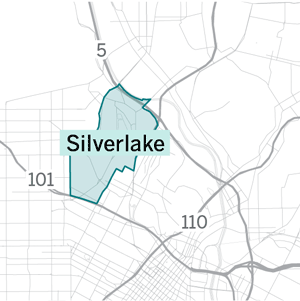
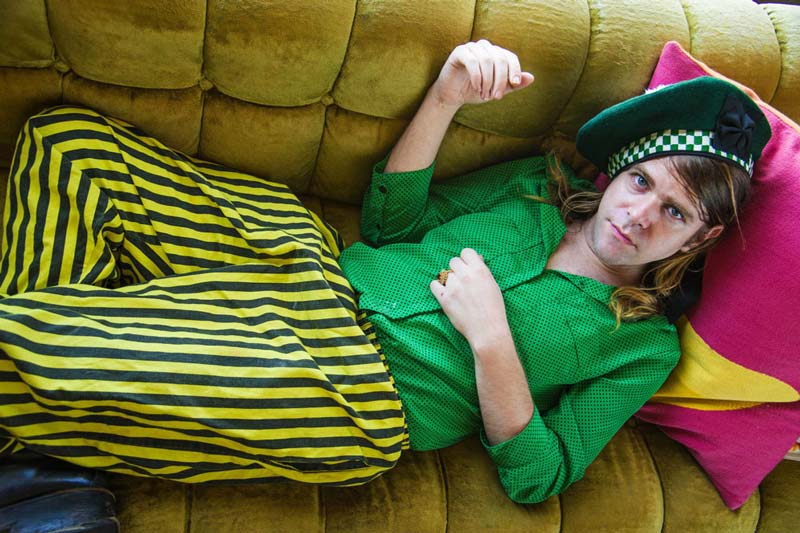

"Hey Ariel, it's Jessica / We met at the taco truck in Silverlake / And I don't know if you're really busy or something / But I haven't heard back from you"
Nothing’s more quintessentially L.A. than the line “We met at a taco truck.” Uttered during avant-pop songwriter Ariel Pink’s 2014 song as a voicemail left by a would-be hook-up, the song nails longing, romance and missed connections in the smartphone era.
Since his rise in the mid-2000s, the left-field pop songwriter born Ariel Rosenberg, who grew up in Beverly Hills, has lyrically explored the city. In another song, “Life in L.A.,” he rhymes the title with “Well, what can I say? / It’s a treasure to find / So many ways to unwind.” “Beverly Kills” celebrates “Beverly’s freaks ... think twice before you meet ’em / Made up of the finest comedians.” He characterized his songwriting aesthetic during a 2014 Times interview as being “this weird thing that’s not supposed to exist. This sort of mediocrity that exists somewhere in the forgotten ’90s and ’80s. It’s supposed to be the stuff that nobody listens to — the thing that got forgotten in the shuffle.”
Nipsey Hussle
‘Crenshaw and Slauson (True Story)’



"Blue Cutlass, no license, .380 tucked / '96 Caprice 'Bolt Da Fatts' was savin up / They gettin' packed out if n— try fade with us / Crenshaw and Slauson, True Story, Zo, play the drums"
Now known as the intersection where Nipsey Hussle was murdered in cold blood, “Crenshaw & Slauson” was written six years prior. At the time, the rapper’s love-letter to his neighborhood reminisced about a life in which roosters greeted the neighborhood every morning and gunfire bid them goodnight. Hussle told The Times’ August Brown in 2017 that he had a particular affection for World on Wheels, a nearby roller rink that the late artist helped restore.
“In middle school, it was the place to be. In L.A., you have to grow up fast, and this was one place kids could go to have a party and be safe,” Hussle said. ”DJ Quik, Suga Free, Snoop Dogg — these were records you could skate to ... People would make a record and go, ‘Oh, that’s for the rink.’ You’d have your club record, your radio record and your rink record.’ ”
Read more: How Nipsey Hussle saw Slauson Avenue
Becky G
‘Becky from the Block’
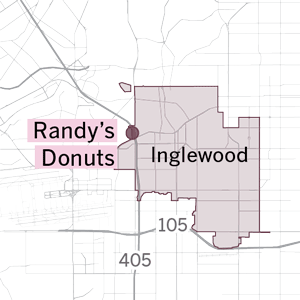


"If you wanna date me, you gotta ask my daddy / And my 30 uncles, you can meet them in an alley / And one day I'mma bring home a Grammy / But no matter what I’ll be bringing home Randy's Donuts"
The artist born Rebecca Gomez zips across a vast expanse of the L.A. basin in her breakout hit, a riff on Jennifer Lopez’s “Jenny From the Block.” In a few choice couplets, the singer moves from the traffic-jammed 405 to the archetypal Hollywood intersection to the LAX-adjacent doughnut mecca in her hometown of Inglewood. Since Becky G’s rise, Inglewood has landed an NFL team and billion-dollar stadium deal, and witnessed the rebirth of the Forum. Randy’s Donuts has never been busier. Coincidence?
Kendrick Lamar
‘Money Trees’

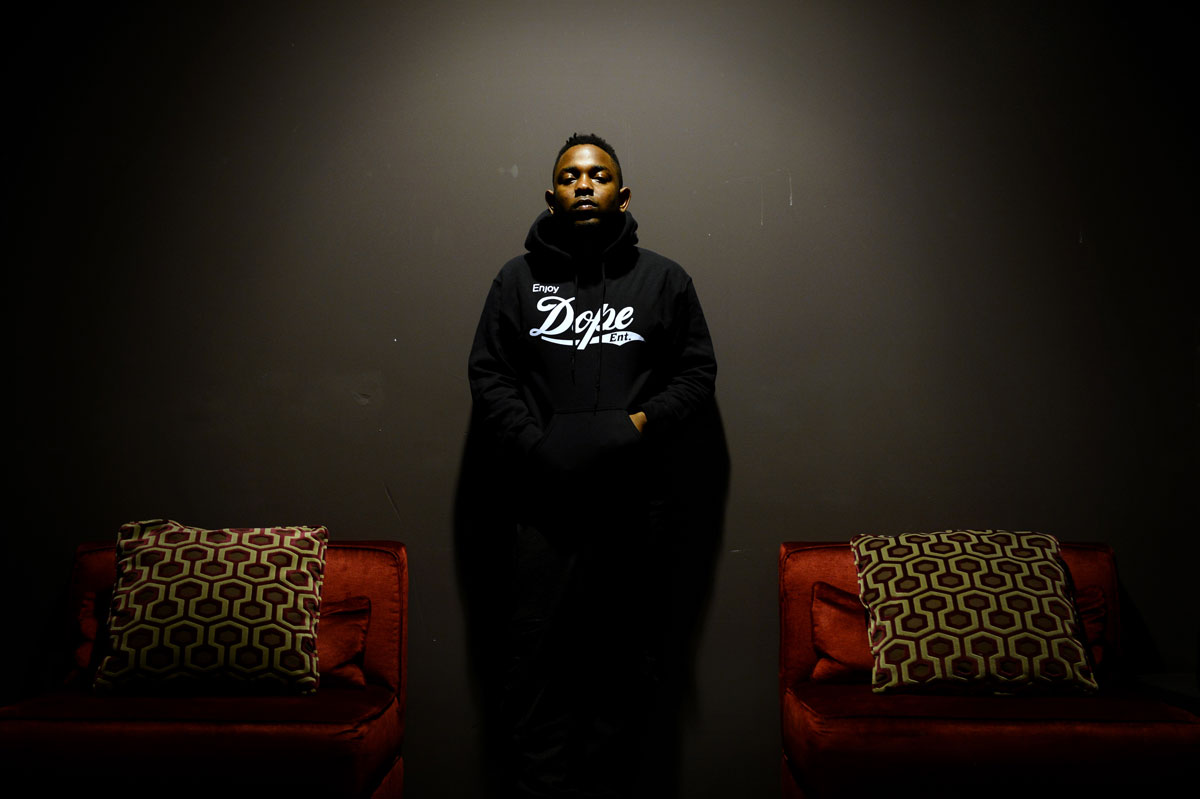

"Back to reality, we poor, ya bish / Another casualty at war, ya bish / Two bullets in my Uncle Tony head / He said one day I'll be on tour, ya bish / That Louis Burgers never be the same / A Louis belt will never ease that pain / But I'ma purchase when that day is jerkin' / Pull off at Church's, with Pirellis skirtin'"
Lamar has set his landmark L.A. stories in his Compton hometown since his early recordings as K Dot. He’s paid particular attention to the Louis Burgers on Rosecrans Ave. for a heart-wrenching reason: His uncle was murdered there. The fast-food joint has a few locations. Lamar’s is known as Louis Burgers II. Another location, Louis Burgers III in Long Beach, earns mention in Vince Staples’ LBC-loving hit “Norf Norf.”
Frank Ocean
‘Sweet Life’



"The best song wasn't the single, but you weren't either / Livin' in Ladera Heights, the black Beverly Hills / Domesticated paradise, palm trees and pools / The water's blue, swallow the pill / Keepin' it surreal, whatever you like / Whatever feels good, whatever takes you mountain high"
A snapshot of what seems to be a fling with an already hitched lover, Ocean’s version of the L.A. sweet life doesn’t occur in the Hollywood Hills or Bel Air, but on the other side of the I-10. There, overlooking the L.A. basin to the north and Long Beach to the south, Ocean sings of a place where “the water's blue.” Who doesn’t want to live in, or at least visit, Frank Ocean’s world?
Best Coast
The Only Place’
Why would you want to live anywhere else?
“We were born with sun in our teeth and in our hair / When we get bored we like to sit around, sit around and stare / At the mountains, at the birds, at the ocean, at the trees / We have fun, we have fun, we have fun when we please”
The breakout hit by Los Angeles indie-rock duo Best Coast offers a drone’s-eye view of Southern California living, one captured by the band’s singer and co-founder Bethany Cosentino’s refrain: “Why would you live anywhere else?” Cosentino recently recalled creating the band’s L.A. anthem.
When Best Coast first started I lived in this teeny-tiny, two-bedroom house in Eagle Rock. I had been writing so much about my love relationship drama, about my own drama and anxieties. I remember thinking, “I want to write a song for this record that isn’t about relationships, that isn’t about me, that isn’t about anything from my personal life.” I sat down and I started writing imagery about California and Los Angeles and “The Only Place” came out.
I remember going to my personal Facebook page and posting a status update that said, “I officially just wrote the first Best Coast song that’s not about a boy who is driving me crazy.” It was about California, a love song to the place where I grew up, the place that inspired the whole aesthetic of our band.
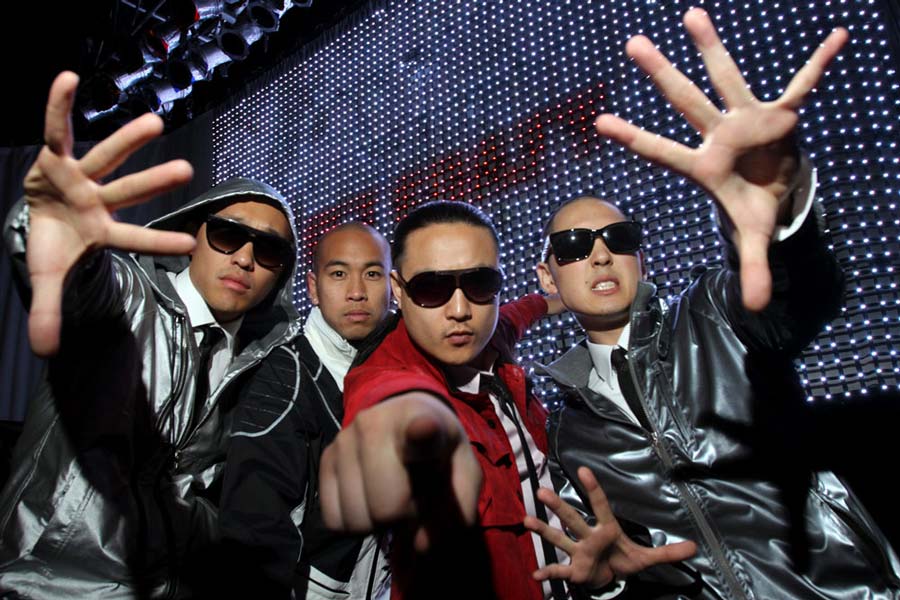
Far East Movement
Bang It to the Curb’
A trunk-rattling ride through Koreatown
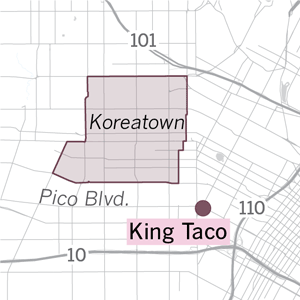
“Banging down the block with my Remy bottle / Repping 213, California lotto / Serving all the fiends like King Taco / My cheese, nachos, flossing til ya unfollow”
Far East Movement’s 2012 party song about, er, drinking, driving, cranking music, smoking weed and speeding was written and recorded at Snoop Dogg’s former Inglewood studio, Purple Reign. Far East Movement, best known for its 2010 EDM smash, “Like a G6,” burst out of Koreatown in the ’00s, giving voice to an enclave known less for its music than its density and food scene. Via email, Far East Movement’s Kev Nish recalled the birth of the group’s K-town-focused track, “Bang It to the Curb.”
What was the inspiration behind the first verse of “Bang It to the Curb”?
Nish: When I visualize these lyrics, I think of driving east on Olympic from K-town towards Vermont, then Hoover, where you get a perfect view of downtown L.A. Before I was recording music, I worked on cars and hooking up car audio systems, so a big part of our sound was always bass-heavy 808 music that could rattle a trunk. This verse was the feeling of riding around with the system all the way up and the windows down, so all of L.A. could hear you coming.
Which King Taco were you most frequenting when you were working on this track?
Always hit the King Taco on Pico below K-Town, and El Taurino, the mother King Taco on Hoover. After any time overseas in Asia, it’s the first place I visit.
Do you still roll with an Alpine system, or have you upgraded?
It was always huge for me to hear a rapper name check a car stereo brand, like Warren G’s “This DJ” [“Pioneer speakers bumping as I smoke on a pound”], so I had to rep Alpine. Crazy enough, we had a chance to collaborate with Alpine for an official sub-woofer series, which was a dream since I used to install Alpines all day.
Dawes
Time Spent in Los Angeles’
A city with a 'tragic kind of charm'
“Maybe meeting you so far away from home / Is what makes it all so clear / But you got that special kind of sadness / You got that tragic set of charms / That only comes from time spent in Los Angeles / Makes me wanna wrap you in my arms”
Taylor Goldsmith wrote the first song on the breakout second album by Dawes, “Nothing Is Wrong,” as the canyon rock band was gaining attention on a national level. Goldsmith and band were on the road a lot, and the absence prompted him to reflect on Los Angeles. A graduate of Malibu High School, Goldsmith and his drumming younger brother were born and raised in the region.
On our first record (“North Hills,” 2009), I was discovering Los Angeles songwriting, but I wasn’t even aware of what that meant or that it belonged in a certain kind of family. I was falling in love with Joni Mitchell and Crosby, Stills & Nash, but I didn’t realize that they represented some sort of region of songwriting history.
I was doing a similar thing that they did, by accident, which is writing songs about wanting to get out of L.A. to live this slower-paced life. Once we did start touring and I was away, I was able to reflect and rediscover, or maybe discover for the first time, how much I loved L.A., and how proud I was to be from there.
In “Time Spent in Los Angeles,” the idea of “You’ve got that special kind of sadness, that tragic kind of charm” — this romantic, defeated attitude — is something that I find edifying when I recognize it in someone who’s spent a lot of time in L.A. I feel at home, almost.
Ximena Sarinana
‘Echo Park’
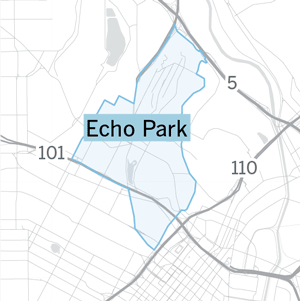
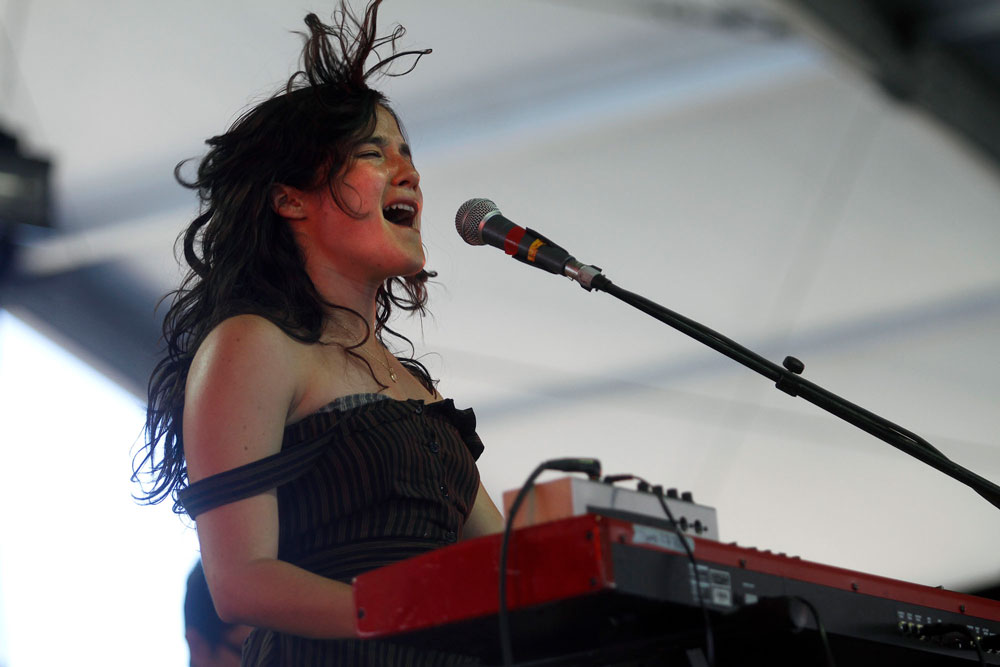

"I know I can be naive / Give myself entirely / For a man who looks like he / Knows his way 'round casually / I will start and look surprised / 'Till someone reminds me that / He lives in Echo Park"
The bilingual Guadalajara, Mexico, singer sang of the titular downtown-adjacent community — or at least one guitar-playing gente who lived there — in 2011. That detail hardly narrows it down. According to a recent (fictional) Echo Park Chamber of Commerce study, there are currently 18.7 songwriters per square mile in the district.
Katy Perry featuring Snoop Dogg
‘California Gurls’

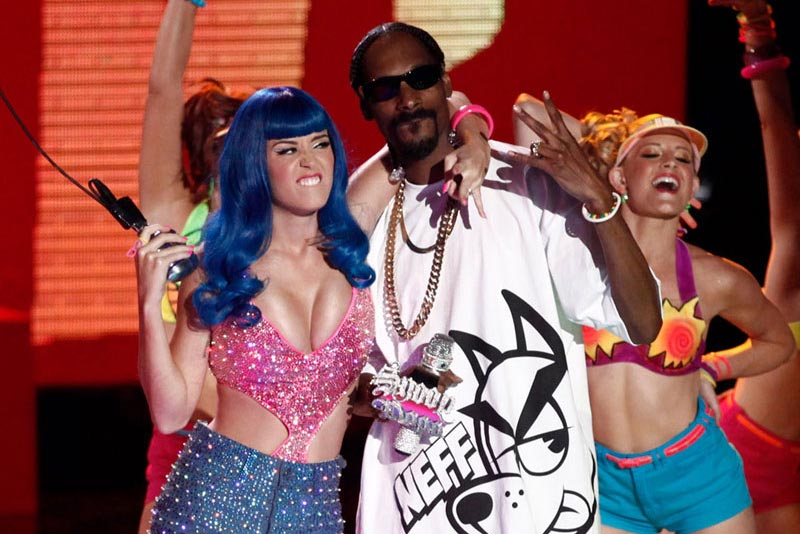

"I love the Bay just like I love L.A / Venice Beach and Palm Springs / Summertime is everything / Homeboys banging out / All that ass hanging out / Bikinis, zucchinis, martinis, no weenies / Just the king and a queenie"
On “California Gurls,” Perry celebrates the better coast. She’s joined by Snoop Dogg, who leaps from the Bay Area to L.A. to Venice Beach and Palm Springs in a single couplet. Best is Snoop’s celebration of Southern California’s four essential elements — earth, air, water and fire be damned: “Bikinis, zucchinis, martinis, no weenies.”
Cali Swag District
‘Teach Me How to Dougie’



"Put your arms out front, lean side-to-side / They gonna be on you when they see you hit that Dougie, right / Ain't nobody f— with my bro from Morningside / He go by Bubba and he hit that dance like thunder"
The dance that swept the nation during the Obama years — who could forget the First Lady’s version? — references a very specific Inglewood neighborhood. As its residents are keenly aware, Morningside Park is in the flight path of LAX, which is five miles west. That’s hardly a reason to dance, but if Cali Swag District’s Smoov is to be believed, his Morningside brother’s thunderous take on the Dougie likely drowns out the jets overhead.
One of the first black middle-class neighborhoods in L.A., Morningside Park abuts both the Forum and the future Rams football stadium. If neighborhood leaders were smart, they’d play up its place in L.A. music history with a statue honoring Cali Swag District’s tragically fallen members Montae “M-Bone” Tlbert and Cahron “JayAre” Childs.
Miley Cyrus
‘Party in the USA’
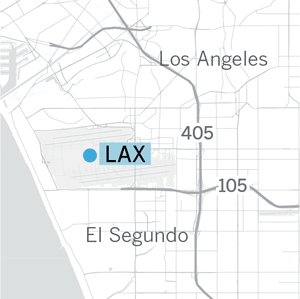


"Hopped off the plane at LAX / With my dream and a cardigan / Welcome to the land of fame, excess / Am I gonna fit in?"
Eleven years ago, the former Hannah Montana was coming into her own and visiting Los Angeles as a Tennessee tourist. The narrative of her breakout hit occurs across a single evening as our hero lands at LAX and heads straight for the Hollywood dance clubs. All the women are wearing stilettos. Cyrus is wearing sneakers. A decade-plus later, few could have known that Cyrus would still be a superstar — or that her dad would help propel country-rap to unimaginable heights.
Beyonce & Jay Z
‘Welcome to Hollywood’



"Just like Janis Joplin, River Phoenix, Jimi Hendrix, Jimmy Morrison / All of them ended by Hollywood / Thank God for Hollywood / Hollywood / Sure you want this, baby?"
Whether or not the lives of Jim Morrison, James Dean and Jimi Hendrix were “ended by Hollywood” is debatable, to say the least. Morrison died in Paris; Hendrix, in London and Dean, in a desert northwest of Bakersfield. Jay and Bey’s Hollywood is the one of the imagination, where excess will kill you, and if it doesn’t, you’ll just hate yourself in the morning.
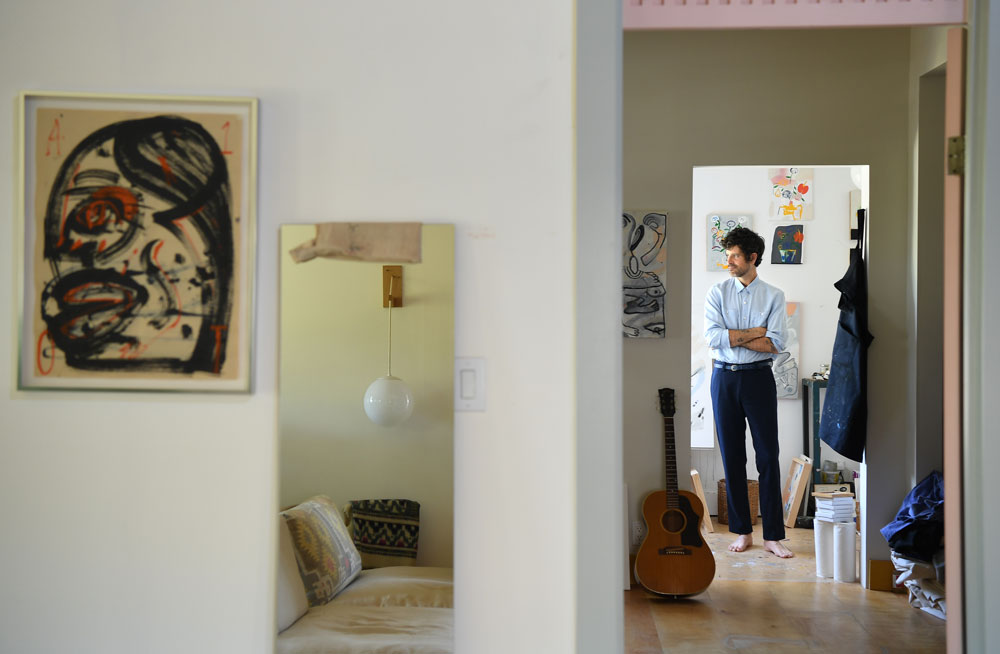
Devendra Banhart
So Long Old Bean’
A Venezuelan-American chooses his own adventure
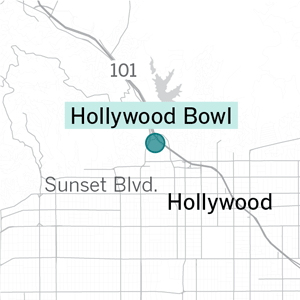
“Now that my tralala's are dating / Little sips of the Hollywood Bowl / They mute up my mind / How kind of them to mellow mellow mellow my soul / Well they're the gambling kind / As smooth as a tuba' ass on the dole / Money never beats soul / How noble”
The Venezuelan American singer and songwriter Banhart has been a longtime chronicler of Southern California life, even if he seldom sets his lyrics specifically in the region. The exception is “So Long, Old Bean,” which features a stanza that references the Hollywood Bowl. Often affiliated with Topanga Canyon life, Banhart for the past decade has lived in Echo Park.
On a recent morning over tea on his front porch, he recalled the genesis of his ode, which was written for his 2007 album “Smokey Rolls Down Thunder Canyon,” and pondered the ways in which songwriters have helped define the city.
So Long, Old Bean” is about L.A., and it might be about my strange relationship with everything that isn’t L.A. It’s my goodbye to everywhere but L.A. There’s a direct reference to the Hollywood Bowl, and I’m imagining this creature, which is L.A., that I’m getting to know — like with a giant straw, drinking from this Hollywood Bowl.
We recorded that whole record in Topanga Canyon. I still have this feeling that I live in California but I’ve never been to L.A.. And it’s what I love about it. You can pick and choose your adventure, and you can do it on a daily basis because it’s very much a blank canvas.
And it’s a place that I can only see sometimes from very, very far away. I’m on tour and suddenly L.A. becomes this mystical land. It’s the light on the horizon. You cannot wait to get back to this place. There’s a million things out here, but I can only get that perspective when I’m far away from it.
Ozomatli
‘City of Angels’

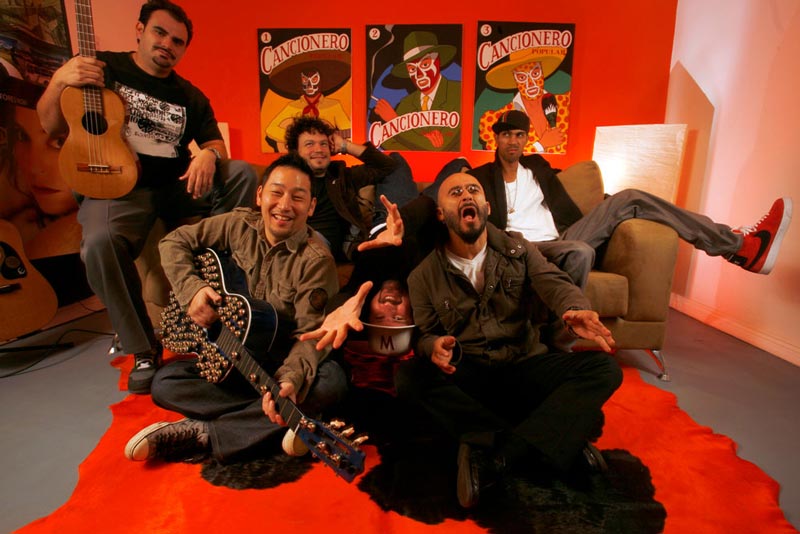

"Grew up Miracle Mile / Fairfax to tar traps, Hamilton High alumni / What you know Ham and cheese supreme / J-B to Carthay cat LA it be the base and the catalyst / Walk Crescent Heights worldwide back to strangle us / Land of the saint and the land of the wicked / Hollywood to Bell / The Manichean kick it"
The enduring Los Angeles band Ozomatli celebrates the Miracle Mile neighborhood along Wilshire in this urgent rally-cry. Rapped by Ozo’s Justin Porée, the track celebrates Hamilton High on South Robertson, the La Brea tar pits and the Koreatown-adjacent Pico West area. The band, in fact, served as cultural ambassadors in an official capacity for nearly a decade. The song’s a top hit at Dodger Stadium.
Neko Case
‘In California’

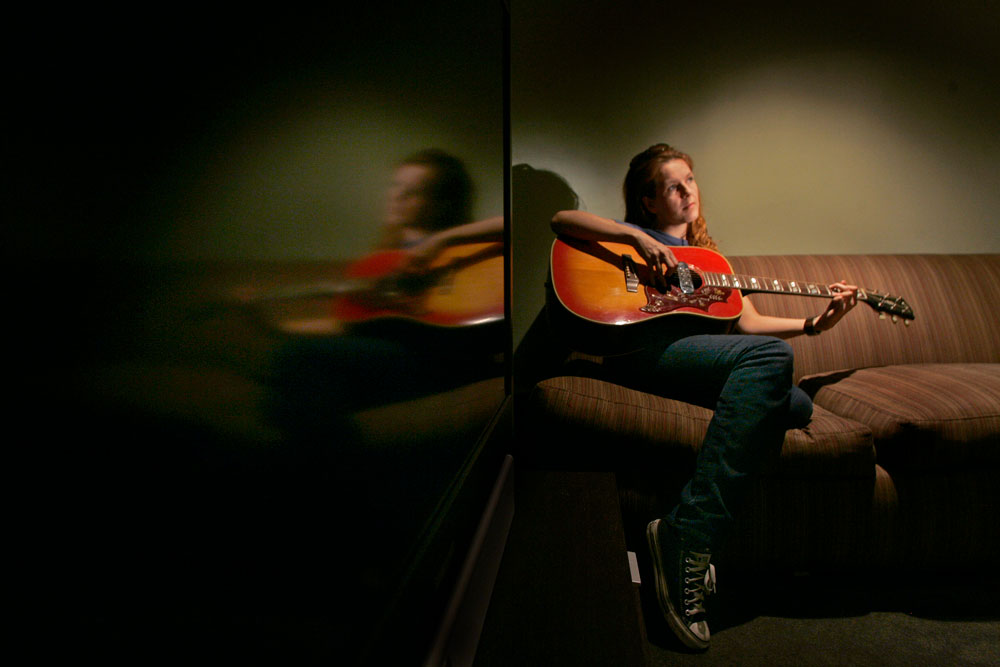

"Another suicide on the 405 / The Black Dahlia she smiles and smiles / It's the same old town that bled her dry / One more starlet one more time / Bound to make it do or die / Talk a walk to Bonnie Brae / Try to wash these dreams away / They try to tell me L.A is beautiful when it rains"
Case isn’t a native but knows enough about Los Angeles to understand the suicidal feeling of driving the 405, to entangle into her lyrics a mention of the Black Dahlia murder and the perils of Hollywood. The great songwriter leaps to Bonnie Brae, which runs from Echo Park to South Los Angeles, where she wants to “try to wash these dreams away.”
Los Abandoned
Van Nuys (Es Very Nice)’
Celebrating an unsung suburb

“En Van Nuys there's porno stars and swap meets -- wanna buy a car? / The Galleria, strip malls too, old Erwin Park and who are you / To tell me that its better in EE.UU. / When you've never seen sunsets in Machu Picchu?”
Written and performed by singer-songwriter María del Pilar and her longtime Los Abandoned collaborator David Gaston Green, “Van Nuys (Es Very Nice)” is the rare L.A. ode that strays into the San Fernando Valley for inspiration. Los Abandoned split in 2007, but its two founders reconvened to discuss their provincial hit.
María del Pilar: Having grown up in Van Nuys, I had always wanted to write a song that had to do with all the things that I saw while I was growing up. Include the diversity of it and the wackiness of it, but then also have a little social context and politics to it. How does an immigrant that comes from such a beautiful place like the Andes mountains or Machu Picchu end up in Van Nuys? They end up in a place that is not as beautiful as where they’re coming from.
David Gaston Green (to del Pilar): I remember you talking about how you overheard kids that were saying “Van Nuys” in a way that sounded like “very nice” on purpose.
del Pilar: Yes, all the cholos! I was living in Echo Park at the time and I was walking around and heard all these cholo kids go like [assumes stoner accent], “Van Nuys.”
Green: This was the first time that we worked with another producer, which happened to be our friend [music producer] Ariel Rechtshaid, who’s from Van Nuys. He took issue with the lyric, “It’s not paradise,” but other than that, he really liked it.
That song was a regional hit in Mexico City because it was on the soundtrack from “A Day Without a Mexican.” The first couple of times we went to Mexico City, we played these huge festivals. So there were like 10,000 kids singing about Van Nuys. It was a beautiful thing.
Weezer
‘Beverly Hills’



"Take my picture by the pool / Cause I'm the next big thing / Beverly Hills / That's where I want to be / Livin' in Beverly Hills"
Weezer singer-songwriter Rivers Cuomo grew up in Santa Monica, so in a tribalistic sense, his take on Beverly Hills is comparable to a Crip writing about Blood territory. He’s not talking about a specific spot, nor is he revealing much new information. Instead, Cuomo and band’s chunka-chunka rock song compares his own lot in life — “My automobile is a piece of crap / My fashion sense is a little whack” — to the tonier residents of his neighbors to the east.
Morrissey
‘First of the Gang to Die’

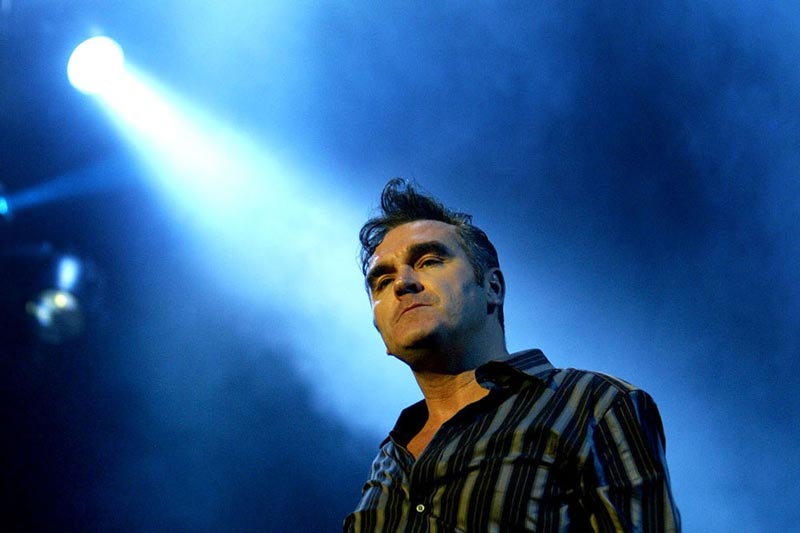

"Los Angeles, you are too hot / You have never been in love / Until you have seen the stars / Reflectin the reservoirs / And you have never been in love / Until you have seen the dawn rise / Behind the home for the blind"
Morrissey lived in Los Angeles for over a decade starting in the 1990s, and when he did, he lived in a grand manse just above the Sunset Strip in the Hollywood Hills. You can find the location online, but it’s unclear which reservoir he’s recalling in this song about fate and the passage of time. When he lived here, Morrissey used to be a regular presence, especially around his old haunt, the Cat & Fiddle. That pub has moved to smaller digs, and the artist has returned to Europe to focus on ranting about immigration.
Boo Yaa T.R.I.B.E
‘Bang On’

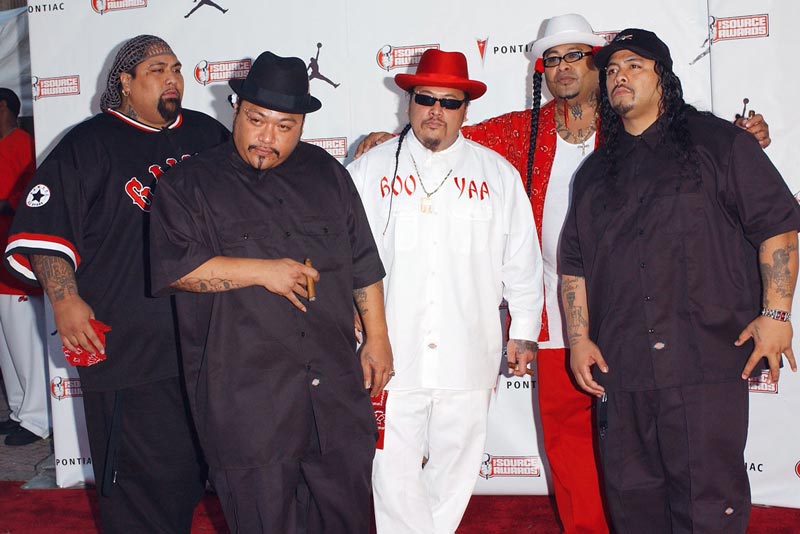

"I say f— them all when I bang them on some / From Inglewood to my city of Carson / Through every hood you should be banging more often / Is your life more then what it is costing?"
What do you know about Carson? It’s nestled between Compton and Long Beach off the 110, yes, but if you’re a rap fan, Carson is Boo-Yaa all the way. The great Samoan American rap group was founded by the seven Devoux brothers in the late ’80s, and since then, they’ve become synonymous with their city.
The Distillers
‘City of Angels’

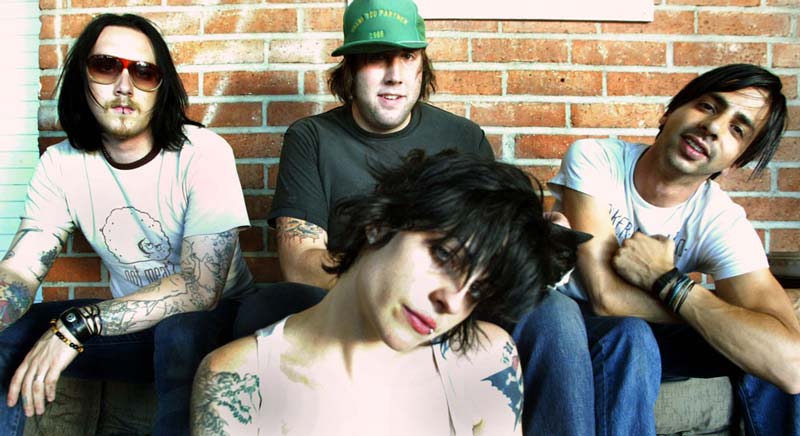

"Los Angeles, come scam me please / Emptiness never sleeps at Clifton's 6 A.M. / With your bag lady friend and your mind descending / Stripped of the right to be a human in control / It's warmer in hell so down we go"
The famed downtown eatery has been renovated and re-imagined since punk band the Distillers celebrated it. Back then, it was a landmark that still gave free food to those who couldn’t afford it. Like much of downtown, the space is way more upscale now.
Eleni Mandell
‘Silverlake Babies’
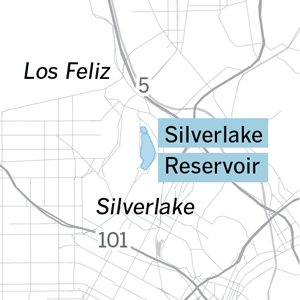


"We'll have Silverlake babies / Up from the reservoir / Hang by our fingers the fence that surrounds it / Under the night sky / The lavender bright sky / Lonely and emptied of stars"
Singer-songwriter Mandell imagines a bucolic, maternal life inside one of the fancy homes surrounding the Silver Lake reservoir. Unlike the beatific orange crate art designs from a century prior celebrating Southern California living, though, Mandell’s lyrics don’t focus only on the landscape. Rather, she’s devoted to the proximity to clubs, its yin-yang nature and how, nestled among the hills, helicopters and high-beams still rule the skies, “buzzing the searchlight / Oh, miracle spotlight / Lonely and emptied of stars.”
Tool
‘L.A. Municipal Court’
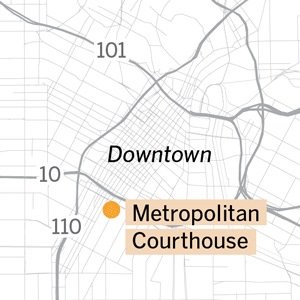


"If you need to make a traffic court appointment, please press 1 / Unless you have not filled out a DD form 3018, in which case / Please press 2. To receive a blank DD form 3018, please come / Down to the Los Angeles Municipal Court building during normal / Business hours. If you have filled out DD form 3018, but have / Not reported to the City Attorney's office, please press 3"
The sturdy granite building on Hill Street in downtown Los Angeles might be unassuming from the street, but as suggested by the automated female voice on experimental metal band Tool’s pounding, grating song, a lot of fury and frustration occurs within its walls. Less a composition than a raging tantrum directed at The Man, the L.A. band moves through six minutes of organized noise as the same voicemail operator guides us through a series of directives sure to revive the PTSD of those who have endured L.A. traffic court.
Rilo Kiley
‘Glendora’

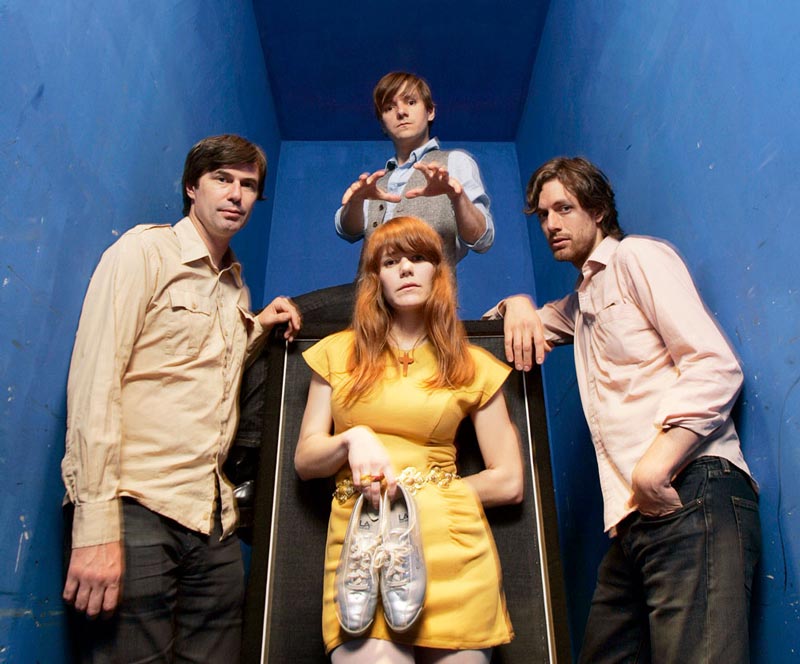

"It's New Year's Eve, I'm in Glendora / I'm the only living person in Glendora / Heading east on the freeway / Left my prom dress on the bus stop in Duarte / I switch the rules, you take advantage / You know I always like to play the victim"
Glendora is not a suburb of Glendale. It’s east down the 134 between San Dimas and Azusa. The prom dress that Rilo Kiley’s singer and cofounder Jenny Lewis abandoned is a few miles west, in the foothills beneath Monrovia Canyon Park. What occurred that led the narrator from Glendora to a Duarte bus stop is not fully clear, but whatever occurred sounds harrowing. Another Rilo Kiley song about the region, “Let Me Back In,” is a more loving song to the city, but the Chandler-esque intrigue of “Glendora” delivers more darkness.
Beck
‘Debra’



"I pick you up late at night after work / I said, "Lady, step inside my Hyundai / I'm gonna take you up to Glendale / Yeah, gonna take you for a real good meal." / Cause when our eyes did meet / Girl, you knew I was packing heat"
Beck’s ironic ode to a woman and her sister tells the story of an affair sparked at JCPenney and (hopefully) consummated in a Hyundai. He rhymes “ripe for a pickin’ ” with “Zankou Chicken” and fantasizes about a date in Glendale. Quiz an outsider on Glendale, and they’ll likely tell you that it’s located a few hours outside of Los Angeles. It’s not. It’s right there by Griffith Park — and Beck treats the unassuming town with Malibu-style reverence.
Hole
Malibu’
A city and song fraught with meaning
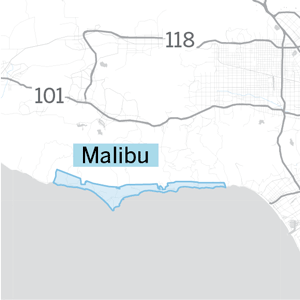
“Burn the sorrow from your eyes / Oh come on be alive again / Don’t lay down and die / Hey hey, you know what to do / Oh baby drive away to Malibu / Get well soon”
Written by Courtney Love, her Hole band mates and collaborator Billy Corgan (Smashing Pumpkins), the anthemic “Malibu” seems to soar as if from the hills of its namesake locale. The Grammy-nominated song was taken from Hole’s 1998 album, “Celebrity Skin.” A self-described conceptual album, its guiding theme, Love said at the time, was “California as a metaphor for the American dream.” Below, Love recalled the many inspirations behind “Malibu.”
The first place I lived in L.A. was in Malibu. My first boyfriend Jeff’s mother was a costume designer who was Faye Dunaway’s person for like 20 years. I’d never met someone close to that kind of fame. I’d just met people in the Grateful Dead. But my whole lack of being from Los Angeles pissed me off. For example, one time Jeff drove us up to his friend’s house on Point Dume — and it was Martin Sheen’s house. I got really freaked out. All of them were playing basketball. Sometimes Sean Penn would come by there, and Charlie (Sheen) and Emilio (Estevez), Rob Lowe and his brother, Chad. This whole world of dudes.
There was a trailer up on Old Chimney Road in Latigo Canyon, and for years after me and Jeff broke up I would bring my boyfriends up to the top of Old Chimney Road and be like, “This is my special place.”
Our breakup was so f-ing horrible. All of this is in the song. It was teen [stuff] but I took it really seriously. I threw a bunch of asthma pills down my throat and I had to go to the Santa Monica St. John’s, then I was taken out to Torrington [rehabilitation center]. They pumped my stomach.
It was a long, drawn-out thing, my L.A. relationship. I’d go to New York sometimes, but I eventually fell absolutely in love with Los Angeles. For “Celebrity Skin,” I wrote a really good dedication: “To all the stolen water of Los Angeles and to anyone who’s ever drowned.”
And around that time [1998], I had met Stevie Nicks. I’m like, “Stevie needs a song from me. I’m going to write her a song.” The whole intention of “Malibu” was to write her a song. After I first heard it, though, I was like, “She can’t have it. I’m not giving it to her.” I could not make the sacrifice. I fell in love with it.
Every time I sing it, it’s not old. It’s a magic song, and the end coda, when I do that live, sometimes I’ll do it for a minute. I’ll get up on the amp, I’m onstage singing, “I can’t be near you / The light just radiates” over and over again until I’m hypnotized.
“Malibu” was written by me mostly, and some [Billy] Corgan. Corgan was around to help transpose it on to piano and off of piano — those kind of really nuanced, important things, including this shambolic, topsy-turvy, drunken-boat-like piano. Melissa and Eric had a lot to do with it too, but when we used Billy for those nine days we got everything we could done.
We did well with that song, but it reminded me of Kurt [Cobain] after a while. Back in 1991, he went to see [Nirvana manager] John Silva. Kurt said, “I want to live in Malibu. My wife says that there’s no drug dealers out there,” which there are, but not like some Hollywood seedy situation.
I always wondered what could have happened if I had moved to Malibu with him then.
“Malibu” is so fraught with meaning. Now it really isn’t about Jeff anymore. It’s a little bit about his mom, but it’s really about Kurt.

Elliott Smith
L.A. ’
A region this sprawling and busy doesn’t demand much — but it has a lot to offer
“L.A, one of a kind / You'll be walking in the sun / Living in the day / Last night I was about to throw it all away / If patience started a band / I'd be her biggest fan / Look at me, I'm talking to you / I don't want the lead in your play”
Before he died in 2003, Elliott Smith had been embraced by Los Angeles, and he returned the favor with “L.A.,” his 2000 shattered-monocle look at the city. The artist had moved to L.A. from New York the year before, and he wrote the song for “Figure 8,” his fifth and final album.
When The Times asked Silversun Pickups cofounder Brian Aubert to ponder his favorite song about the city, he selected Smith’s"L.A.” Aubert, whose band was named in honor of a Sunset Boulevard liquor store, hasn’t name-checked the city in his own work, but his group certainly draws inspiration from L.A.'s essence. Below, Aubert burrows into “L.A.”
There’s a common question I get asked in interviews regarding our band, Silversun Pickups: “How does being from a city like Los Angeles shape the way you approach music?”
Being a fourth-generation Angeleno, I don’t know what it’s like to not be from L.A. This isn’t somewhere I searched out to fulfill a desire. The city is in my DNA. It’s home.
Still, I’m always struck by the city’s mysteries. Each time you travel more of the map, you realize how much remains unexplored. The city’s beauty isn’t in its shiny, obvious objects. It’s the treasures hidden behind minimall doors. The best food you’ll ever have is in an alley off a boulevard and keeps bizarre hours. The best venue might be unlisted and occupying a space a few floors above your favorite bar. The spaces between the spaces. The surprises.
Elliott Smith’s “L.A.” evokes that sensation of driving around the city without a GPS. Compared with the world-weariness and introspection that characterize much of Smith’s work, this lesser-known gem has a hopeful playfulness. For me, it’s a song about someone caught in a moment of shifting perspective — glimpsing a previously hidden idea or destination.
Things I’ve never done / Cars parked in the sun / Living in the day / Last night I was about to throw it all away
Plenty of music has been written about L.A.: Songs of sunsets and ocean waves, seedy odes to urban demise. Snarky digs uttered by those at war with the idea of the city, one whose residents either aren’t aware of or don’t care about the vitriol aimed in its direction.
L.A. is a litmus test. Bored? That’s not the city, that’s you. Lonely? That’s not the city’s fault.
In 1999, after moving from Portland, Ore., to New York, two cities that seem to revel in hating L.A., Smith moved here. As such, upon arrival, he might have been scanning the city for its faults.
If patience started a band / I’d be her biggest fan
A region this sprawling and busy doesn’t demand much. Unlike New York, it doesn’t present itself with majesty or sparkling glory. You could fall in love with San Francisco in a day. L.A. has much to offer, but it won’t offer it unless you have the patience and drive to let it open up for you. It takes a few years to come into focus, and eventually, many of the stereotypes fade.
The gentleman’s in the lane, spinning his hat on a cane / Stepping out, out for a change / Good morning all / It’s a beautiful day
When juxtaposed with nighttime L.A., Smith suggests that the light of L.A. mornings can carry with it an optimism. This city can invigorate you — if you allow it to.
The generals are winning a war / Seemed suicidal before
The use of “suicide” is a painful foreshadowing. Because of Smith’s death, the word becomes the lens through which his lyrics take on new meaning.
Morning had to come / I’d be walking in the sun.
But I’m not interested in that lens. My goal is to release his song from this albatross so I can listen the way I used to: with the optimism I had when I first heard “L.A.,” and the idea that he evokes where he seems to be saying, “There is something to this city, and I’m going to let it in.”
R.E.M.
‘Electrolite’
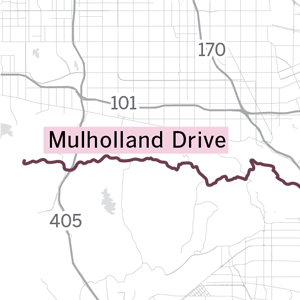
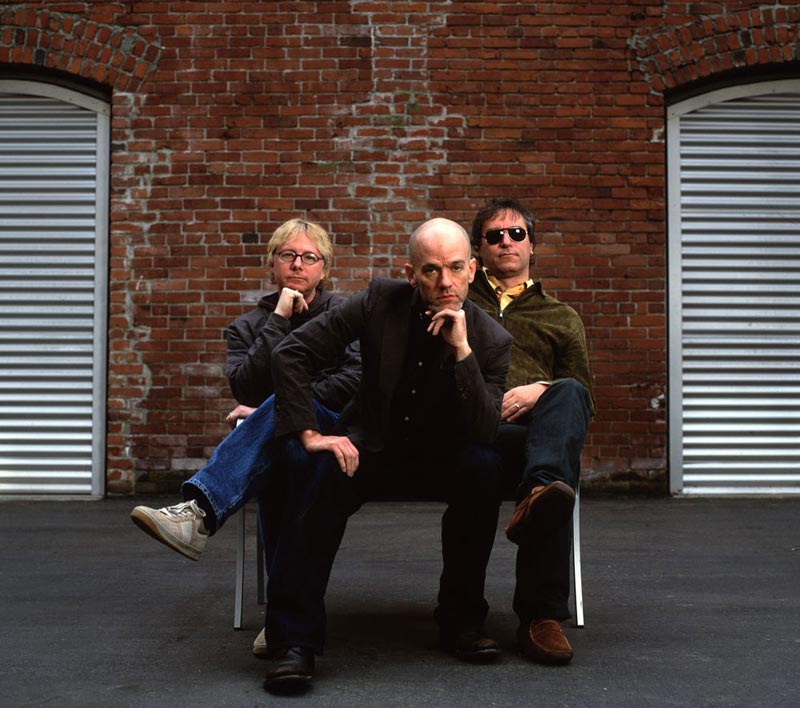

"If I ever want to fly / Mulholland Drive / I am alive / Hollywood is under me / I'm Martin Sheen / I'm Steve McQueen / I'm Jimmy Dean"
Those who have taken Mulholland at night understand the sensation that singer Michael Stipe describes in this meditative song from “New Adventures in Hi-Fi.” Wending along the scenic stretch yields breathtaking views of the L.A. basin — and no small amount of envy at the wealth that the road represents.
“The character in that song is driving through the hills of Mulholland, looking at the beauty of Los Angeles at night,” R.E.M.'s Peter Buck told The Times in 1996. “Everyone really does feel like Steve McQueen or someone when they are on top of the hill. I don't know what really happens to the guy at the end of the song ... when he comes down to reality.”
Rage Against the Machine
‘Down Rodeo’

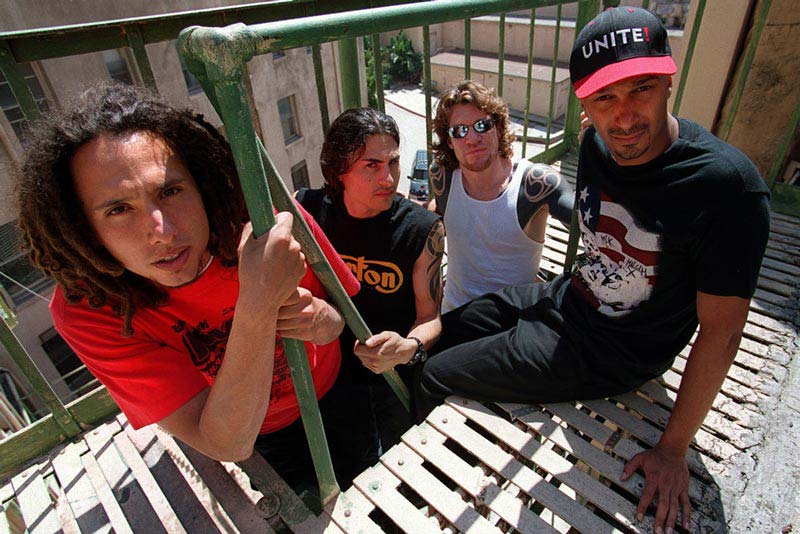

"Yeah I'm rollin' down Rodeo with a shotgun / These people ain't seen a, brown-skinned man / Since their grandparents bought one"
“I know that some people look at us as just rabble-rousing or ranting or whining. But I think a lot of that reflects the cynicism that people have when it comes to dealing with political problems. The hopelessness. I think you can see it at the polls,” Rage Against the Machine’s Zach de la Rocha told The Times in 1996, as the band was promoting “Evil Empire,” the album from which “On Rodeo” is taken. “No one thinks that they can make a difference. What we are trying to show is that people can make a difference.”
Where, exactly, de la Rocha is on Rodeo is anyone’s guess. The Gucci store? The Ivy? Nobu? Take your pick. But what he skips over is that “rolling down Rodeo” means he’s stuck in an endless traffic jam caused by some selfish talent agent in a Ferrari trying to make a left onto Brighton Way during rush hour.
Eels
Susan's House’
Mark Everett on his L.A.-centric approach to song settings

“Going over to Susan's house / Walking south down Baxter Street / Nothing hiding behind this picket fence / There's a crazy old woman smashing bottles / On the sidewalk where her house burnt down two years ago / People say that back then she really wasn't that crazy”
Eels, the musical project of Mark Everett, has long documented life in the scrubby neighborhoods near Sunset’s easternmost edge. Most famously, he serenaded the recently removed Happy Foot Sad Foot sign in Silver Lake on a song of the same name. Another, “Susan’s House,” is set on Baxter Street in Echo Park. Its lyrics could be a paragraph from a Raymond Chandler novel: A death near one of L.A.'s steepest streets turns into a grim, disconcerting scene filled with doughnuts, darkness and shards of fluorescent light.
I used to write all these songs about my neighborhood. I was practically giving directions to where I live to deranged stalkers. “Susan’s House,” in particular, was crazy because I lived on Baxter Street and there were specific directions. “Take a left on Baxter St.” Really playing with fire there. Good thing I moved soon after that.
There’s a lot of artistic license in those lyrics. Susan didn’t actually live in my neighborhood. She lived in South Pasadena. I wasn’t walking from Echo Park to South Pasadena. I stuck her house in Echo Park for the song. There is a lot of stuff that’s real on it, though. The kid being put into a body bag was a real thing, but I think it was on Echo Park Boulevard. The doughnut shop, Donut Prince, is actually in Burbank.
And Baxter is such an iconic street. Someone needed to get that in. It’s always in movies because it’s the steepest street, but it’s not often sung about. I used to live halfway up to the top of the peak. Jeeps and trucks would get stuck — dry-docked on the top. Sometimes people would be so traumatized by it they’d just park, call me and say, “Come get me.”
Sublime
‘April 29, 1992 (Miami)’

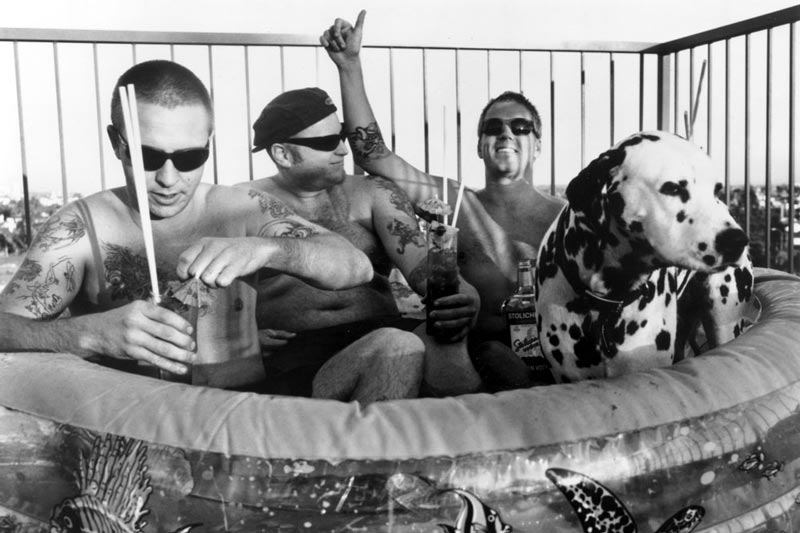

"Next stop we hit it was the music shop / It only took one brick to make that window drop / Finally, we got our own P.A / Where do you think I got this guitar that you're hearing today? / Hey! / "Call fire and tell them to respond at a Mobil station / Alamitos and Anaheim / It's, uh, flamin' up good" / '10-4, Alamitos and Anaheim'"
A tour diary of the L.A. riots, told from the perspective of some musically inclined looters. If the late singer Bradley Nowell is to be believed, there was one less liquor store in Long Beach after the 1992 riots, because he and his team turned it “into a structure fire.” In the song, a police radio locates the crime in progress — “10-4 — Alamitos and Anaheim.”
The Pharcyde
‘She Said’

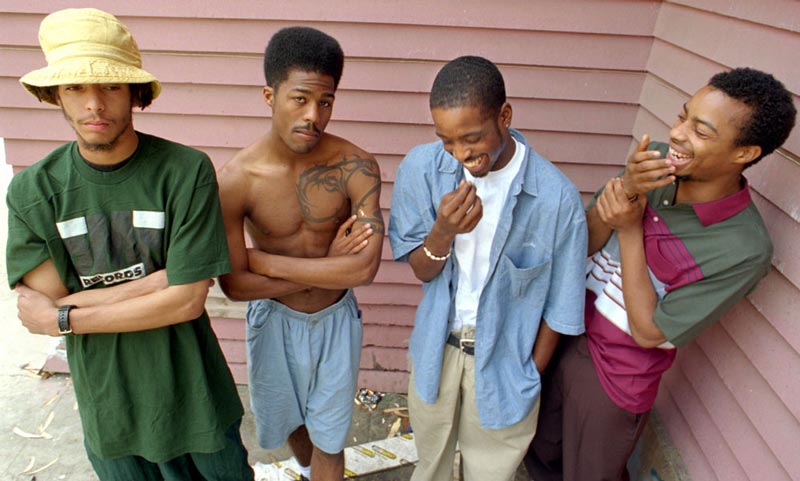

"Looking right cause my s— is tight / Blazing blunts to city lights on Sunset and Crescent Heights / Bounce to the House of Blues then I slid in free / With tennis shoes, sweatshirt, jeans and no ID"
Fatlip is speaking of an intersection at the heart of the Sunset Strip. In 1992, that intersection housed a Virgin Records Megastore. After blazing a joint outside the shop, he heads west down Sunset to the now-shuttered House of Blues. Known at the time for its controversial — some would say racist — dress code, the club considered Pharcyde to be so powerful that the bouncers let them slide.
“We laugh a lot. We find humor in things other people don’t. Everyday situations, " Fatlip told The Times in 1993. “People might look at things around here and say, like, ‘Damn!’ We say, ‘Ha ha ha.’ We just chill out.” Fatlip added: “This is the last interview I’m doing. I’ve said everything I want to say. I don’t need to talk to anybody anymore.” (Indeed, Fatlip declined numerous attempts to be newly interviewed for this project.)
Red Hot Chili Peppers
‘Deep Kick’

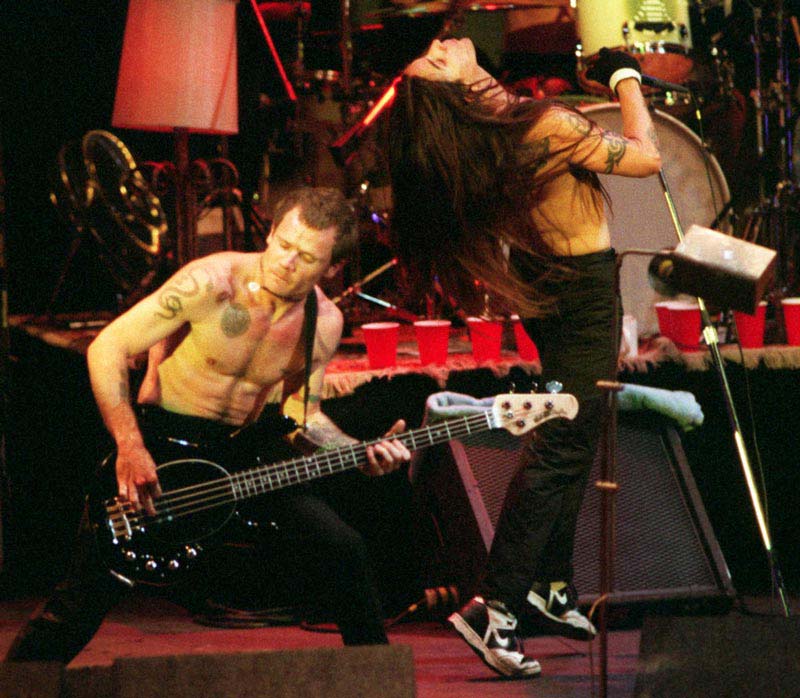

"We went to Fairfax High School / Jumped off buildings into their pools / We'd sit down and grease at Canters / Run like hell they can't catch us / Two boys in L.A. proper / Two boys in L.A. proper / Stealing anything that we could / Got to sneak into the Starwood / Got to peak into the deep good"
In one quick-shot verse, the Peppers’ Anthony Kiedis describes his and bandmate Flea’s teenage years growing up in Hollywood, jumping from Fairfax High School to Canter’s Deli and the punk club the Starwood. The platinum funk-rock band has long celebrated its local roots, and is as lyrically connected to the city as the Doors or the Beach Boys.
“This is where we grew up, and we are affected by our surroundings,“ Kiedis told a Times reporter in 1990, while they were riding through the Fairfax district in a limousine. “L.A., and Hollywood specifically, is a very huge element of what we are all about … This is an incredible place, and it shows in our music. It’s disgusting and it’s beautiful at the same time, which is basically what life is all about. We got a very concentrated dose of reality growing up in this town.”
Montell Jordan
‘This Is How We Do It’



"I'm kinda buzzed and it's all because / This is how we do it / South Central does it like nobody does / This is how we do it"
A song that celebrates cruising through Los Angeles in a big black pick-up truck, Jordan’s debut single takes place on a Friday night as he and his team drink from 40-oz. cans and make their way home from a party on the Westside. “Designated driver, take the keys to my truck,” Jordan commands, pointing out that the “honeys in the street say, ‘Monty, yo we made it!’ — it feels so good in my hood tonight.” The unsung hero of this new jack swing anthem? The designated driver. Were there such a thing as the Official Anthem of Los Angeles County, “This Is How We Do It” makes the final ballot, no question.
Liz Phair
‘Dogs of L.A.’

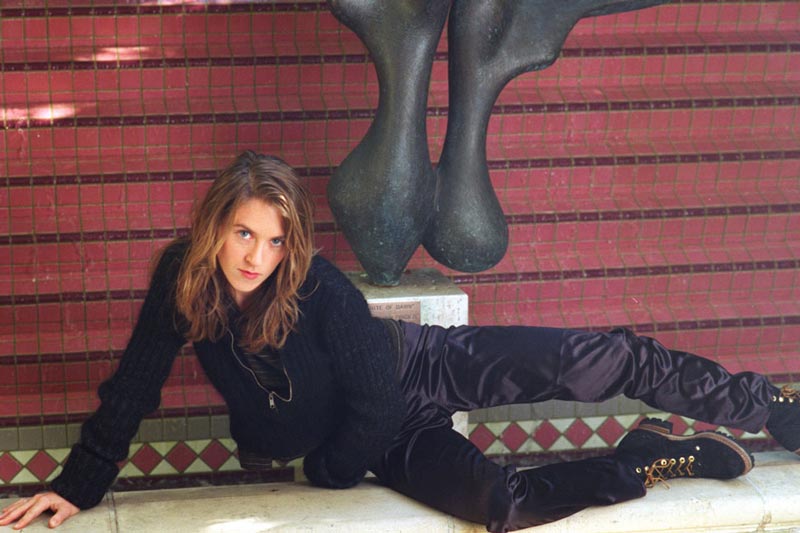

"The canyon air is like a breath of fresh L.A. / I was a Star Trek crew member, with my Beatle boots and my Super-8 / And I raced you to the top, the camera gets a stuttered shot / Of me approaching a painted shrine"
Whether Phair is speaking of Benedict, Laurel or Topanga Canyon, she’s thinking about canines and reflecting on youth. The dirty reservoir of which she sings must be near whichever hiking site Phair describes. Stone Canyon, Silver Lake, Rowena or Upper Franklin?

L7
Andres’
Making a bad situation 'rollicking and joyous'
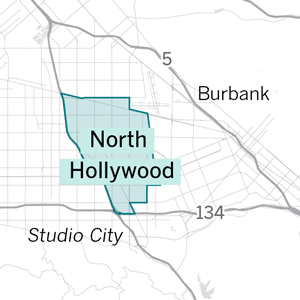
“Down in North Hollywood / There's a guy with long hair / He's really, really nice / But we had a problem”
One of the crucial songs from grunge band L7’s oeuvre was recorded for its album “Hungry for Stink.” A crawling, unnerving work about the titular dude, “Andres” reads like a series of haiku. L7’s co-founder Donita Sparks recalls the genesis of the song.
Suzi [Gardner] and I lived on the Eastside, Dee [Plakas] and Jennifer [Finch] lived on the Westside. So we all decided we would rehearse in North Hollywood. A lot of metal bands rehearse in North Hollywood. We had a space where Andres was the studio manager. He was our age, but not really a punk rocker — not from the seedy underbelly of Los Angeles. He was a North Hollywood guy.
I had a friend who I did not realize was a sociopath and a thief. This creepy friend stole some gear from Andres, and when confronted by Andres, I defended him at first. Lo and behold, we discovered very soon after that this friend was indeed a thief. The next time we saw Andres, it was kind of awkward. I had my tail between my legs.
Suzi had this riff she had been working on. We’re in our rehearsal room and she starts going, “Down in North Hollywood / There’s a guy with long hair / He’s really, really nice / But we had a problem.” Then she started singing “Andres!” And I added, “I’m sorry!” I wrote the second verse, which was mainly about all the problems at the studio, like the A/C not working. And every time he’d open the door into our studio, we’d start singing “Andres, I’m sorry!” and he’d shut the door.
L7 often times take really s— situations, write about them and turn them into something fun and rollicking and joyous. When we play the song around the world, everybody in the audience will always scream “North Hollywood,” and they’ll always scream, “Andres,” even if they don’t speak English.
Warren G feat. Nate Dogg
‘Regulate’

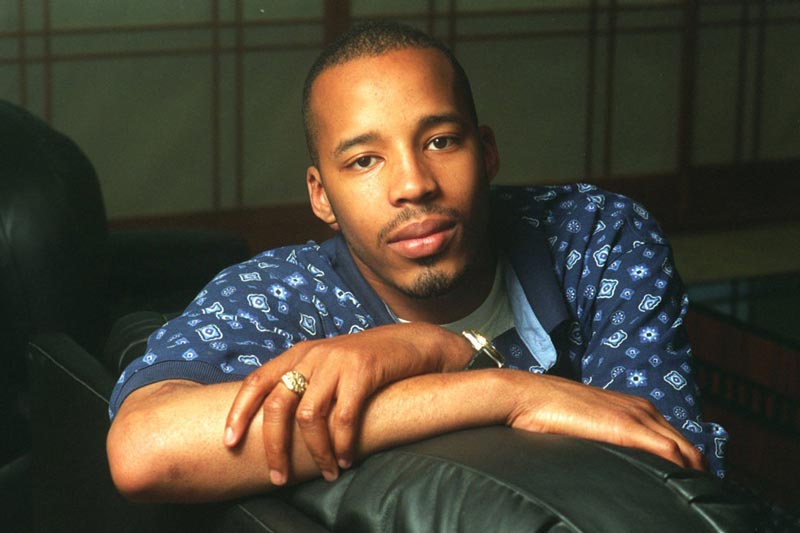

"Just hit the east side of the LBC / On a mission tryin' to find Mr. Warren G / Seen a car full of girls, ain't no need to tweak / All you skirts know what's up with 213"
A true collaborative effort, Dogg and G deftly trade four-line verses on this classic G-funk jam set in East Long Beach near the intersection of 21st and Lewis. With the precision of playwrights, Warren G describes a “clear black night, clear white moon” as Nate Dogg conveys the event from his perspective. There’s a dice game, a robbery, a gun aimed at Warren G’s head and a last-minute rescue by his pal. With the incident resolved, the two friends — what else? — hook up with “a gang of hoes over there on the curb.”
“I used to hang out at this spot, and my homeboys were telling me, ‘You gonna have to start making some money, because you just can’t be sitting here with us,” Warren G told The Times in 1995, of the song’s location.
Afghan Whigs
‘Fountain and Fairfax’

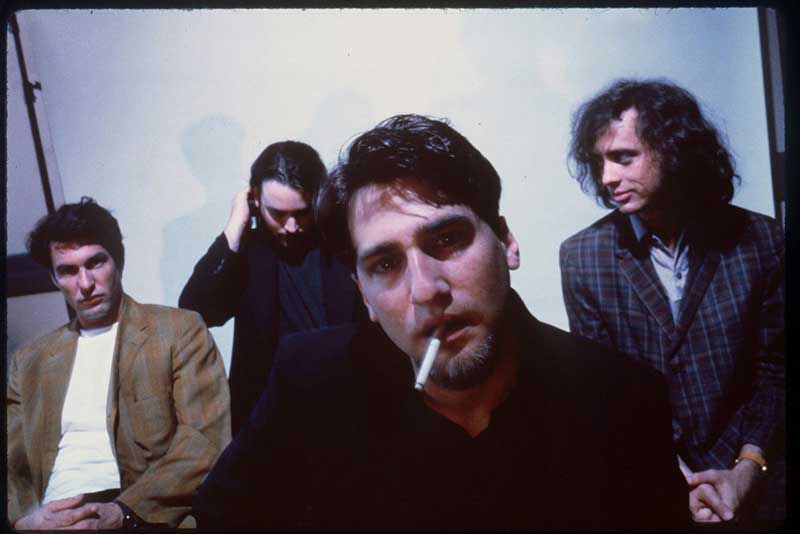

"Angel, forever / Don't you promise me / What you cannot deliver now / Angel, together / I'll be waitin' for you / On Fountain and Fairfax"
Lead singer and lyricist Greg Dulli is focused on a particular building, Crescent Heights Methodist Church, in the grunge-heavy song from the band’s breakout album “Gentlemen.” The church held AA meetings, which Dulli attended with a friend. “I heard some really poignant testimony there, and also saw a couple people up there who looked like they were auditioning for an acting job,” he once said.
Ice Cube
‘It Was a Good Day’

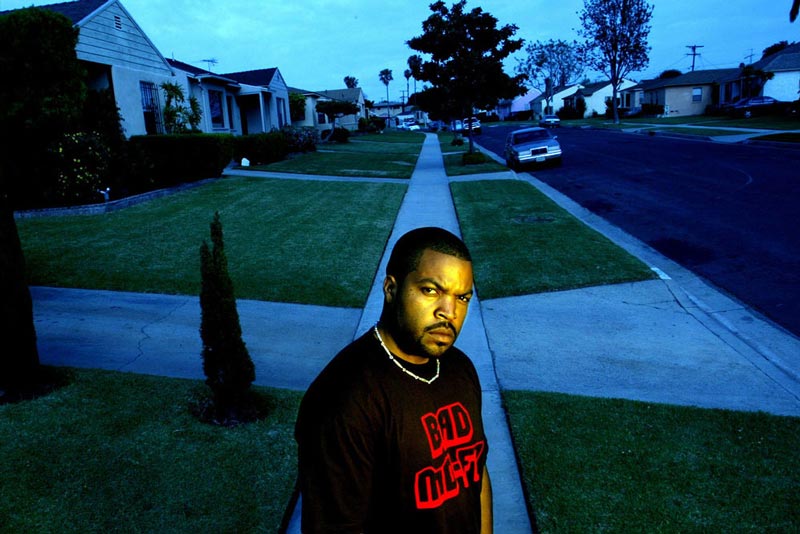

"I picked up the cash flow / Then we played bones, and I'm yellin': 'Domino!' / Plus nobody I know got killed in South Central L.A. / Today was a good day"
Life is hard in Los Angeles, but some days just seem to shine, a truth that Ice Cube unspools across the length of the track. Released following the 1992 Los Angeles riots, lyrically “Good Day” moves across time and space, and a quarter-century later, it marks a kind of beginning to a new Los Angeles spin on the city.
